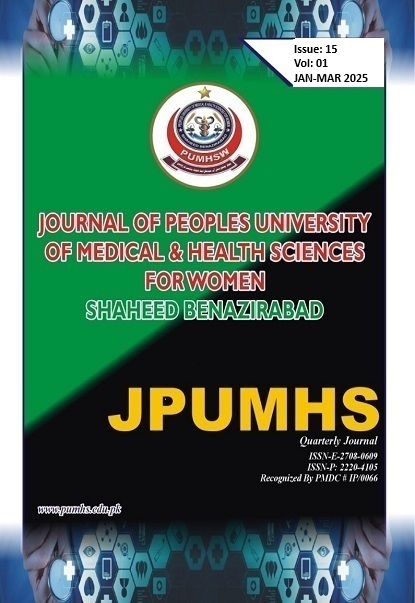BURDEN OF DECOMPENSATED LIVER DISEASE IN PAKISTAN: AN EPIDEMIOLOGICAL EVIDENCE.
PUMHS; 2025:15: 01,229-239. http://doi.org/10.46536/jpumhs/2025/15.01.616
Keywords:
Decompensated cirrhosis, Pakistan, hepatitis C, MASLD, liver failure, meta analysis.Abstract
BACKGROUND: Decompensated liver disease (DLD) is a leading cause of morbidity and
mortality in Pakistan, driven primarily by viral hepatitis, metabolic dysfunction-associated
steatotic liver disease (MASLD), and alcohol-related liver injury. Despite its high burden,
comprehensive epidemiological data remain scarce. This meta-analysis synthesizes available
evidence to quantify the prevalence, etiological distribution, and clinical outcomes of DLD in
Pakistan. METHODS: A systematic search was conducted across PubMed, Google Scholar,
and Pakistani medical journals (2000–2023) for studies reporting DLD prevalence, etiology,
complications, or mortality. Pooled estimates were calculated using random-effects meta
analysis, with subgroup analyses by etiology and region. RESULTS: Among 18 eligible
studies (n=19040 patients), the pooled prevalence of DLD in cirrhotic patients was 15.6%
(95% CI: 12.4–19.2%), with HCV (63.5%), HBV (18.7%), and MASLD (12.1%) as leading
causes. The 1-year mortality rate was 47.3% (95% CI: 41.5–53.2%), with variceal bleeding
(32%), hepatorenal syndrome (24%), and sepsis (19%) as major contributors. DLD accounted
for 9.8% of hepatology admissions, with significant regional disparities higher in Punjab
(17.1%) and Sindh (14.5%) compared to Khyber Pakhtunkhwa (10.3%).
CONCLUSION: Pakistan faces a severe and growing burden of DLD, predominantly due to
untreated viral hepatitis and rising metabolic risk factors. Delayed diagnosis, restricted access
to antiviral medications, and insufficient transplant services worsen patient outcomes.
Immediate public health actions, such as broadening HCV screening, providing affordable
direct-acting antivirals (DAAs), and implementing strategies for preventing MASLD, are
essential for alleviating this crisis.
Downloads
Downloads
Published
How to Cite
Issue
Section
License

This work is licensed under a Creative Commons Attribution-NoDerivatives 4.0 International License.




